Using bumblebees and other beneficial insects for natural pollination has emerged as a transformative practice. Greenhouse growers enhance yield quality and quantity by harnessing these tiny allies while fostering sustainable agricultural systems. This blog delves into the fascinating realm of natural pollination within greenhouse crops, shedding light on the intricate partnerships between plants and their winged companions.
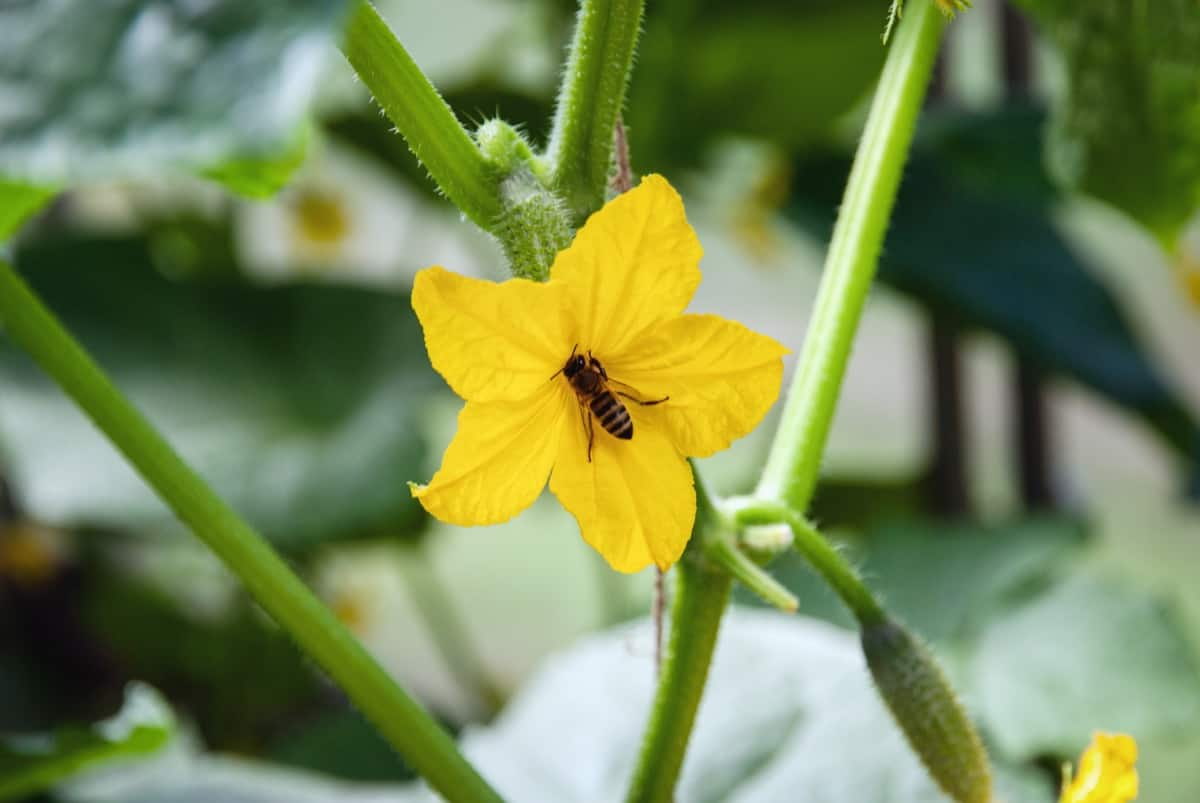
Introduction to Natural Pollination in Greenhouse Crops Using Bumblebees
The term “bumblebee” pertains to insects within the Bombus genus of the Hymenoptera Class. Predominantly, Bombus terrestris is employed in greenhouses for pollination. Pollination ensues via robust thoracic vibrations emitted by bumblebees, propagated through their legs to flowers. A bumblebee’s flower visit leaves a bruise-like mark, signifying successful pollination. Commercial bumblebee hives encompass queens, workers, and broods.
Nurtured with sugar water, workers feed the brood and seek pollen, thus pollinating crop flowers. Emerging brood elevates pollinator population, expanding flower visits. Workers may traverse up to 3 km, with a hive sufficing for a 2000m² greenhouse. Optimal pollination hinges on plant vigour, water provision affecting pollen quality, and hive addition to tackling high flower numbers.
Importance of Pollination in Greenhouse Agriculture
- Bountiful Harvests: Pollination is the backbone of crop reproduction, yielding abundant fruits and vegetables for our tables.
- Enhanced Quality: Proper pollination leads to uniform and well-formed produce, ensuring better market value and consumer satisfaction.
- Genetic Diversity: Pollination encourages genetic mixing, fostering stronger and more resilient plant populations that can withstand pests and diseases.
- Ecosystem Balance: Pollinators play a key role in maintaining ecosystem equilibrium by aiding plant growth and preserving biodiversity.
- Boosted Nutrient Density: Effective pollination produces more nutritious crops, benefiting human and animal diets.
- Seed Production: Pollination is pivotal in producing seeds for the next planting season, securing future crop cycles.
In case you missed it: Buzzing Towards Success: Creating a Comprehensive Beekeeping Business Plan
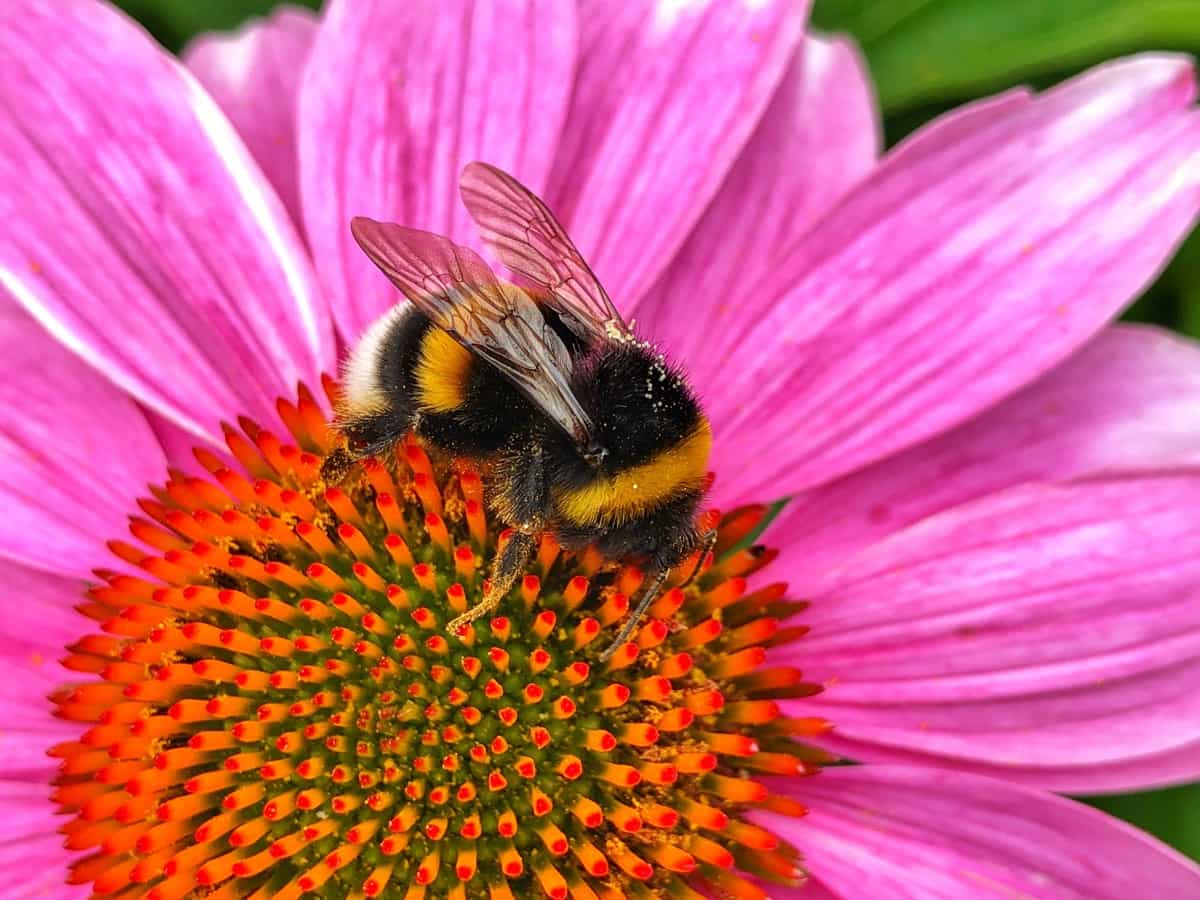
Role of Bumblebees in Natural Pollination
- Efficient Pollinators: Bumblebees excel at moving pollen from one flower to another, ensuring robust fertilization and healthy crop yields.
- Buzz Pollination: They employ a unique buzz technique, releasing vibrations that liberate stubborn pollen, enhancing pollination efficiency.
- Diverse Plant Partnerships: Bumblebees are versatile pollinators, engaging with various plants, from fruits to vegetables, contributing to ecosystem biodiversity.
- Early Risers: Their early activity during cooler mornings aids in kick-starting pollination, especially for temperature-sensitive crops.
- Long-haul Travelers: Bumblebees venture far and wide, reaching distant flowers and extending their pollination reach across larger areas.
- Heavy Lifters: Their robust bodies allow them to carry substantial pollen loads, ensuring ample pollen transfer in a single visit.
- Loyalty to Flowers: Bumblebees often exhibit flower fidelity, regularly revisiting the same plant species, intensifying pollination.
- Pollen Providers: While gathering nectar, bumblebees inadvertently gather and spread pollen, fostering cross-pollination.
- Crop Saviors: They aid in pollinating vital crops like tomatoes, peppers, and berries, elevating yield quality and quantity.
Benefits of Using Bumblebees for Pollination in Greenhouses
Firstly, bumblebees are highly efficient pollinators, enhancing crop yields and superior produce quality. Their unique buzz pollination technique ensures thorough pollen distribution, benefiting various greenhouse crops. Secondly, bumblebees are natural pollinators, negating the need for human intervention or artificial pollination methods. This saves time and labor and reduces reliance on chemical fertilizers, aligning with sustainable and eco-friendly practices.
How to Install a Bumblebee Hive in a Greenhouse
- Transport and Positioning: Carry the hive upright to its final greenhouse spot. Avoid areas with water leakage or excess moisture.
- Clear Exit Hole: Ensure the exit flight hole is unobstructed, allowing bumblebees free access.
- Diverse Directions: If multiple hives are at the same level, orient their exit holes differently to prevent confusion.
- Sunlight Protection: Shield the exit hole from direct sunlight to prevent overheating and maintain hive comfort.
- Appropriate Elevation: Place hives low on crops, providing shade without exposing them to cold or direct sunlight.
- Settling Time: Wait 2 hours before opening the hive. This lets bumblebees calm down and adapt to their new surroundings.
- Minimal Movement: Once opened, avoid moving or disturbing the hive. This maintains colony stability.
- Timing Matters: During warm seasons, open hives late afternoon; early morning or evening placement is preferred for new hives.
- Consistency is Key: If relocating hives, maintain the original position to prevent bee confusion.
- Nutritional Support: Regularly supply sugar water to depleted hives and offer pollen during short flowering periods.
- Ant Management: Prevent ants from using bait stations or greasing hive surroundings, as ants are drawn to sugars.
- Compatibility with Pesticides: Check hive compatibility with plant protection products (PPP), as some may be toxic to pollinators. Use PPP databases for guidance, favoring newer, bee-friendly products.
- Monitoring and Adaptation: Observe bee behavior and population. If disturbances occur, consider changing products or hive replacement.
In case you missed it: Pest and Disease Management in Beetroot: Causes, Symptoms, Chemical, and Biological Control
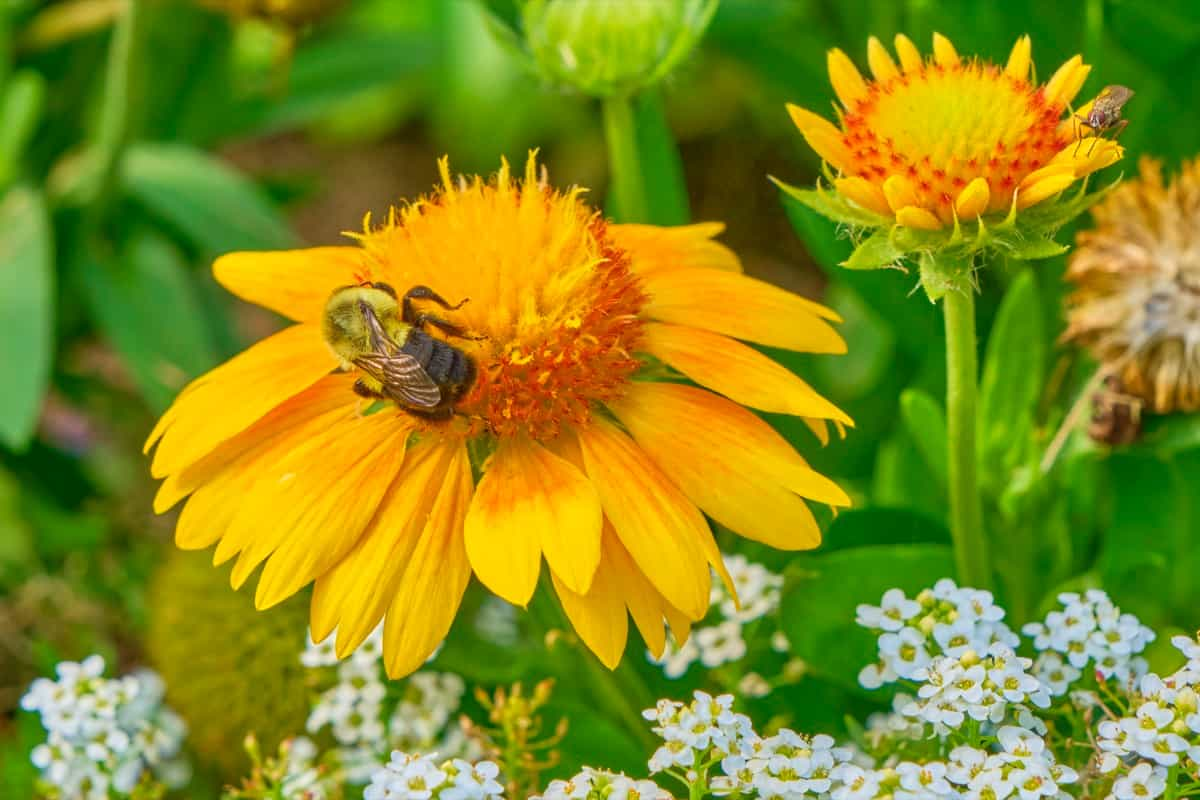
Other Beneficial Insects for Natural Pollination in Greenhouse Crops
Mason Bees, hoverflies, the butterfly flies, beetles, wasps, flies, ants, moths, birds, and native bees are all essential pollinators for early spring crops. Mason Bees ensure thorough pollination, while hoverflies and butterfly flies transfer pollen effectively. Hoverflies, insects that feed on pollen and nectar, are used to treat aphid infestations in sweet pepper plants.
Two commercially available species have been found to increase fruit set and weight under greenhouse conditions, providing biocontrol and pollination services simultaneously. This benefits farmers by increasing fruit set and weight in sweet pepper plants, demonstrating the potential of hoverflies as beneficial pest control agents. Wasps visit flowers for nectar, flies prey on pests, ants aid in specialized plants, and hummingbirds help in larger greenhouse setups.
Attracting and Maintaining Beneficial Insects in Greenhouses
Plant Fitness and Vigor: To ensure successful pollination, healthy plants are crucial. When many lateral shoots grow, open flowers are abundant. If existing hives can’t fertilize all flowers, adding more hives is recommended. Watering affects pollen quality and hive development. Water stress leads to poor pollen and unattractive flowers for bumblebees.
Environmental Conditions: Optimal pollination hinges on temperature, humidity, and radiation. An ideal range is 23-28°C and 60-75% relative humidity (RH). Above 30°C, bumblebees focus on temperature regulation, not foraging. In high temperatures, cooling and shading systems are advised. Humidity affects pollen—too dry or sticky pollen deters bumblebees and impedes flower stigma suitability.
The interplay of Factors: Biotic and abiotic elements are intertwined. Harsh conditions weaken plants, favoring vegetative growth over flowering and fruiting. Note that guidelines vary among plant varieties.
Creating a Suitable Environment for Natural Pollinators in Greenhouses
- Plant Selection: Choose diverse plant species that provide nectar and pollen throughout the growing season, catering to different pollinator needs.
- Habitat Enhancement: Integrate native plants, nesting sites, and sheltered areas to create a conducive pollinator habitat.
- Reduced Chemical Use: Minimize pesticide and herbicide application to safeguard pollinators from harm.
- Water Sources: Offer water stations, like shallow dishes with pebbles, for pollinators to quench their thirst.
- Nesting Opportunities: Incorporate materials like wood blocks or hollow stems to provide nesting sites for solitary bees.
- Climate Control: Maintain best temperature and humidity levels for pollinator comfort.
- Avoid Light Pollution: Limit artificial lighting at night to aid nocturnal pollinators.
- Regular Monitoring: Keep track of pollinator populations and their activity patterns.
In case you missed it: How to Start Beekeeping in Canada: Check How this Guide Helps Beginners
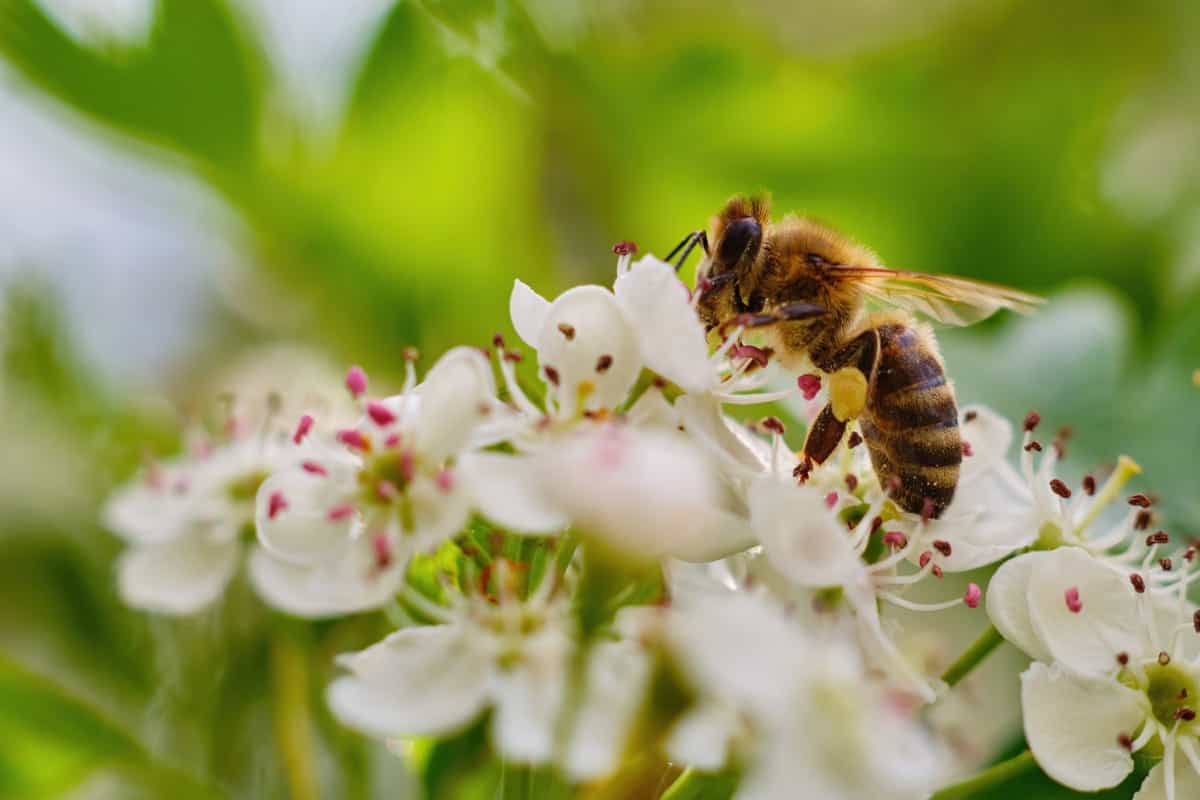
Pros and Considerations for Natural Pollination in Greenhouse Crops
- Enhanced Fruit Quality: Bee pollination results in superior fruit quality. Proper pollination leads to well-formed and better-tasting produce.
- Labor Savings: Relying on bees reduces human workers’ need for manual pollination. Bees work more efficiently and can cover larger areas.
- Efficiency: Bees are highly efficient pollinators, aiding in better fruit production than other methods.
- Environmental Benefits: Bees foster an environmentally friendly greenhouse by encouraging reduced pesticide usage.
- Consistent Pollination: Introducing hives regularly ensures a steady and reliable pollination process.
- Bee Selection: Not all bees are suitable for greenhouse pollination. Bumblebees are often preferred due to their adaptability to greenhouse conditions.
- Species Differences: Bumblebees have advantages over honeybees, including better sight orientation, suitability for varied weather conditions, and less aggression.
- Crop Suitability: Bee pollination is most effective for certain crops, including berries, tomatoes, peppers, eggplants, and specific seed crops.
- Ornamental Plants: Bee pollination might not be necessary for ornamental plants as the benefits are less pronounced.
Managing Pest Control to Protect Beneficial Insects
To manage pests effectively, learn to differentiate harmful insects from beneficial ones, use integrated pest management (IPM) strategies, introduce natural predators, use selective pesticides, apply pesticides when beneficial insects are less active, monitor pest and beneficial insect populations, create habitats that encourage beneficial insects, use crop rotation to disrupt pest life cycles, and plant sacrificial crops to lure pests away. Minimize disruption by avoiding excessive pesticide use that harms both pests and beneficial.
Monitoring and Assessing the Effectiveness of Natural Pollination
Regular observation of flower visitation rates by pollinators provides insights into their activity. Tracking the number of fruit sets and their quality showcases pollination success. Pollen analysis can reveal pollen source diversity and transfer efficiency. Additionally, mapping the spatial distribution of pollinators helps identify areas with inadequate coverage.
Behavioral studies aid in understanding pollinator preferences and interactions. Comparing results with previous seasons or different practices offers valuable benchmarks. Incorporating technology like motion-sensitive cameras or RFID tags enhances accuracy.
Challenges and Limitations of Natural Pollination in Greenhouses
Bees enhance fruit quality and reduce labor needs. However, bee species selection matters; bumblebees are preferred with better adaptation to greenhouse conditions. Some crops, like berries and certain vegetables, benefit most from bee pollination. Yet, ornamental plants yield fewer tangible gains.
Hive placement and environmental management demand attention. Successful pollination relies on factors like bee behavior, weather, and crop types. Balancing these factors optimizes the benefits of natural pollination while navigating its limitations in greenhouse settings.
Integrating Artificial and Natural Pollination Methods
The hybrid approach to pollination combines artificial and natural methods for optimal yield and quality. It enhances precision, diversity of pollinators, weather resilience, labor efficiency, and ecosystem balance. Artificial methods target specific flowers, while natural pollinators like bees provide robust coverage across crops. This approach also minimizes labor-intensive hand-pollination, optimizing resource allocation. It also supports biodiversity and ecological stability, allowing for tailored crop strategies.
Best Practices for Implementing Natural Pollination Strategies in Greenhouses
Optimal conditions encompass various factors affecting pollination quality. Plant fitness and vigor are key; excessive lateral shoots result in a surge of open flowers, necessitating adequate hives for fertilization. Precise irrigation is pivotal, impacting pollen quality and hive development.
Environmental conditions like temperature (23-28°C) and relative humidity (60-75%) are crucial. High temperatures over 30°C hinder bumblebee foraging. Protective measures like cooling and shading are recommended. Deviations from optimal humidity levels lead to unattractive pollen. Environmental factors affect plant health; extreme conditions hinder flowering and fruiting stages.
In case you missed it: 17 Key Rules for Effective Beekeeping Management: Basic Tips for Profitable Honeybee Farming
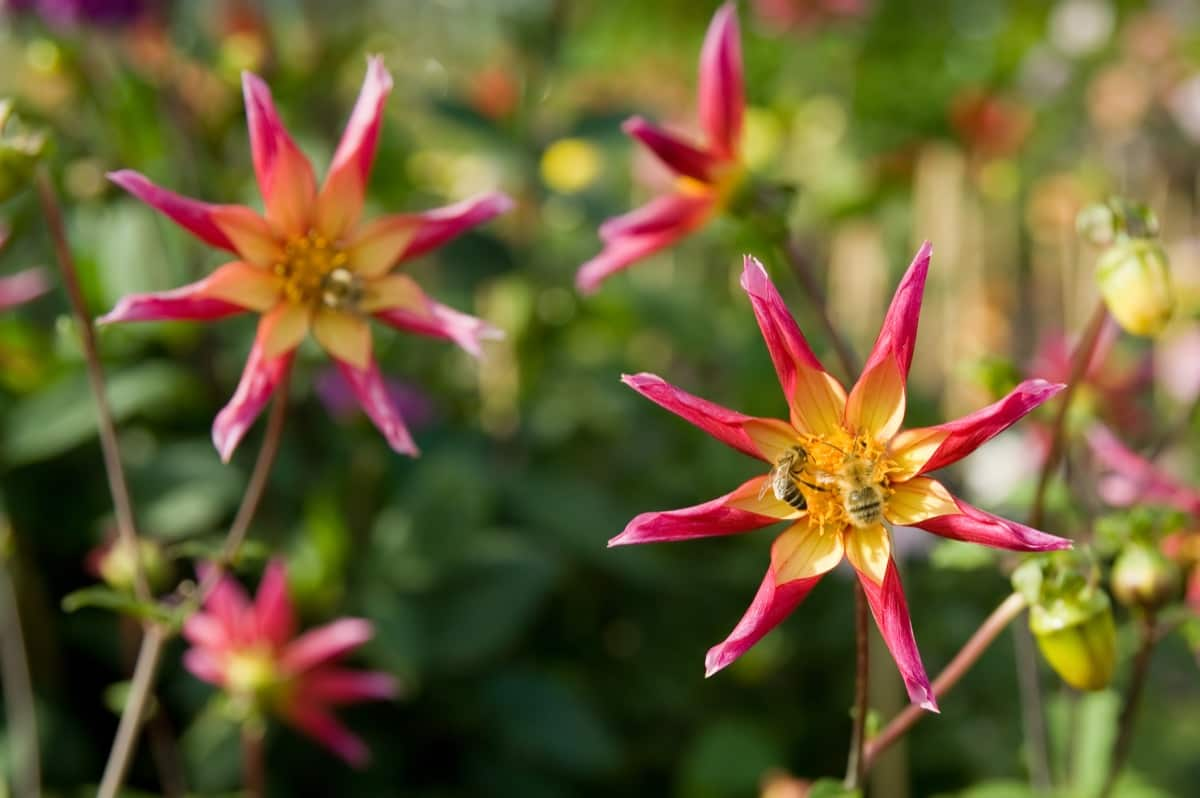
Hive placement is critical. Transport hives upright and position them away from water leakage. Ensure clear exit holes, avoid direct sunlight, and place hives low with shade. Allow bumblebees to settle after opening hives, and avoid moving them. Address and attraction with baits or grease. Compatibility with plant protection products requires scrutiny. Comprehensive databases guide farmers in choosing bee-safe substances.
Case Studies and Success Stories of Natural Pollination in Greenhouse Crops
Real-world success stories highlight the efficacy of natural pollination in greenhouse crops. One such case involved tomato cultivation, where introducing bumblebees increased yield by 30% and improved fruit quality. In another instance, pepper production saw a significant rise in fruit set and uniformity due to bumblebee pollination.
Strawberry cultivation witnessed enhanced berry size, taste, and yield. A commercial cucumber grower reported increased pollination rates and larger fruits with bumblebee assistance. These success stories underscore the pivotal role of natural pollinators, specifically bumblebees, in boosting crop productivity and quality within greenhouse environments.
Future Perspectives and Research Directions in Natural Pollination
Ongoing research aims to enhance pollination efficiency through innovative technologies, like automated pollinator drones. Genetic studies strive to develop plants with heightened attractiveness to pollinators. Understanding the impacts of climate change on pollinator behavior and adapting strategies accordingly is crucial. Research into optimizing hive placement, species selection, and hive management techniques continues.
In case you missed it: Ultimate Guide to Greenhouse Irrigation and Water Management
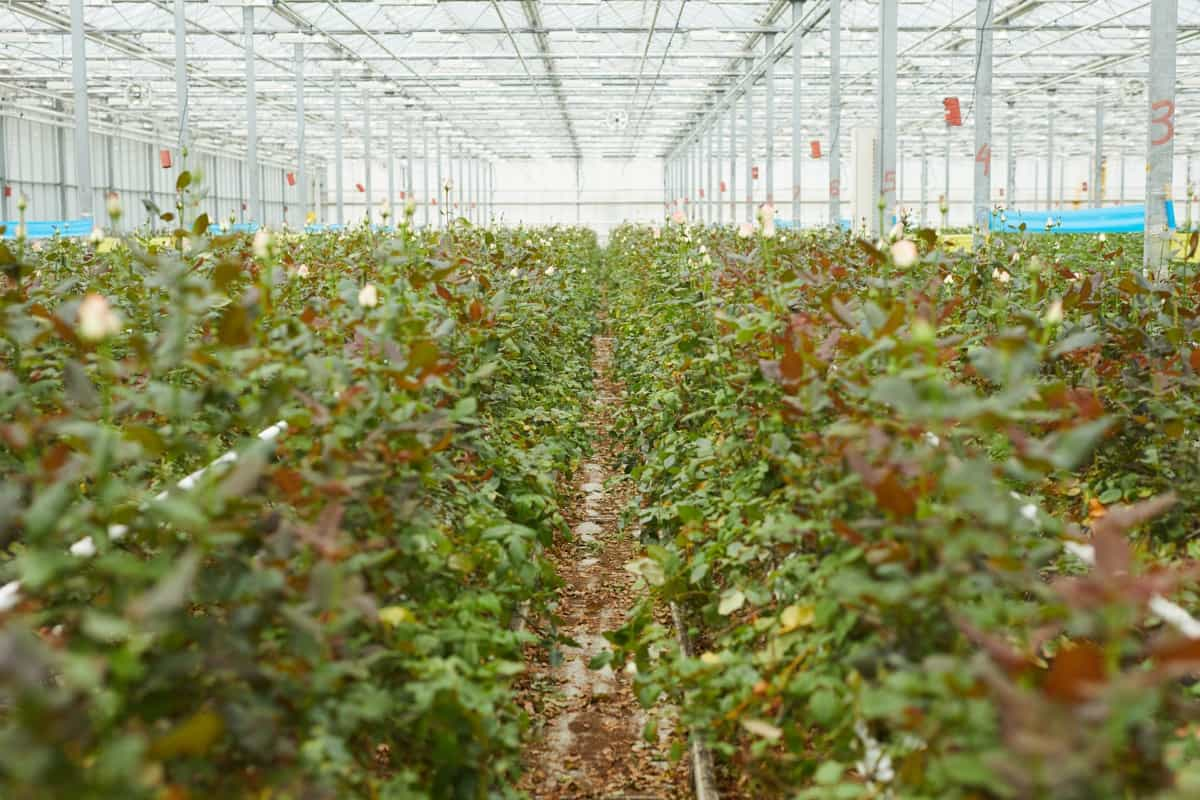
Conclusion
Incorporating natural pollination, driven by bumblebees and other beneficial insects, is a sustainable solution for greenhouse crop productivity. Their efficient pollination methods and careful hive management elevate yields, quality, and ecological balance. Harnessing the power of these industrious pollinators holds the key to a flourishing agricultural future.
- Types of Pesticides Used in Agriculture: A Beginner’s Guide
- Economical Aquaculture: A Guide to Low-Budget Fish Farming
- 15 Common Planting Errors That Can Doom Your Fruit Trees
- How to Make Houseplants Bushy: Effective Tips and Ideas
- Innovative Strategies for Boosting Coconut Pollination and Yield
- Pollination Strategies for Maximum Pumpkin Yield
- The Complete Guide to Chicken Fattening: Strategies for Maximum Growth
- Natural Solutions for Tulip Problems: 100% Effective Remedies for Leaf and Bulb-Related Issues
- Revolutionizing Citrus Preservation: Towards a Healthier, Greener Future
- Natural Solutions for Peony Leaf and Flower Problems: 100% Effective Remedies
- Maximizing Profits with Avocado Contract Farming in India: A Comprehensive Guide
- Natural Solutions for Hydrangea Problems: 100% Effective Remedies for Leaf and Flowers
- The Ultimate Guide to Choosing the Perfect Foliage Friend: Bringing Life Indoors
- From Sunlight to Sustainability: 15 Ways to Use Solar Technology in Agriculture
- The Ultimate Guide to Dong Tao Chicken: Exploring from History to Raising
- The Eco-Friendly Makeover: How to Convert Your Unused Swimming Pool into a Fish Pond
- Mastering the Art of Delaware Chicken Farming: Essentials for Healthy Backyard Flocks
- 20 Best Homemade Fertilizers for Money Plant: DIY Recipes and Application Methods
- How to Craft a Comprehensive Free-Range Chicken Farming Business Plan
- Brighten Your Flock: Raising Easter Egger Chickens for Beauty and Bounty
- How to Optimize Your Poultry Egg Farm Business Plan with These Strategies
- Subsidy for Spirulina Cultivation: How Indian Government Schemes Encouraging Spirulina Farmers
- Ultimate Guide to Raising Dominique Chickens: Breeding, Feeding, Egg-Production, and Care
- Mastering the Art of Raising Jersey Giant Chickens: Care, Feeding, and More
- Ultimate Guide to Raising Legbar Chickens: Breeding, Farming Practices, Diet, Egg-Production
- How to Raise Welsummer Chickens: A Comprehensive Guide for Beginners
- How to Protect Indoor Plants in Winter: A Comprehensive Guide
- Ultimate Guide to Grow Bag Gardening: Tips, Tricks, and Planting Ideas for Urban Gardeners
- Guide to Lotus Cultivation: How to Propagate, Plant, Grow, Care, Cost, and Profit
- Agriculture Drone Subsidy Scheme: Government Kisan Subsidy, License, and How to Apply Online
- Ultimate Guide to Raising Araucana Chickens: Breed Profile, Farming Economics, Diet, and Care
- Bringing Hydroponics to Classroom: Importance, Benefits of Learning for School Students
- Ultimate Guide to Raising Polish Chickens: Breed Profile, Farming Economics, Diet, and Care
- Ultimate Guide to Raising Australorp Chickens: Profile, Farming Economics, Egg Production, Diet, and Care
- Silkie Chicken Farming: Raising Practices, Varieties, Egg Production, Diet, and Care
- Sussex Chicken Farming: Raising Practices, Varieties, Egg Production, Diet and Care